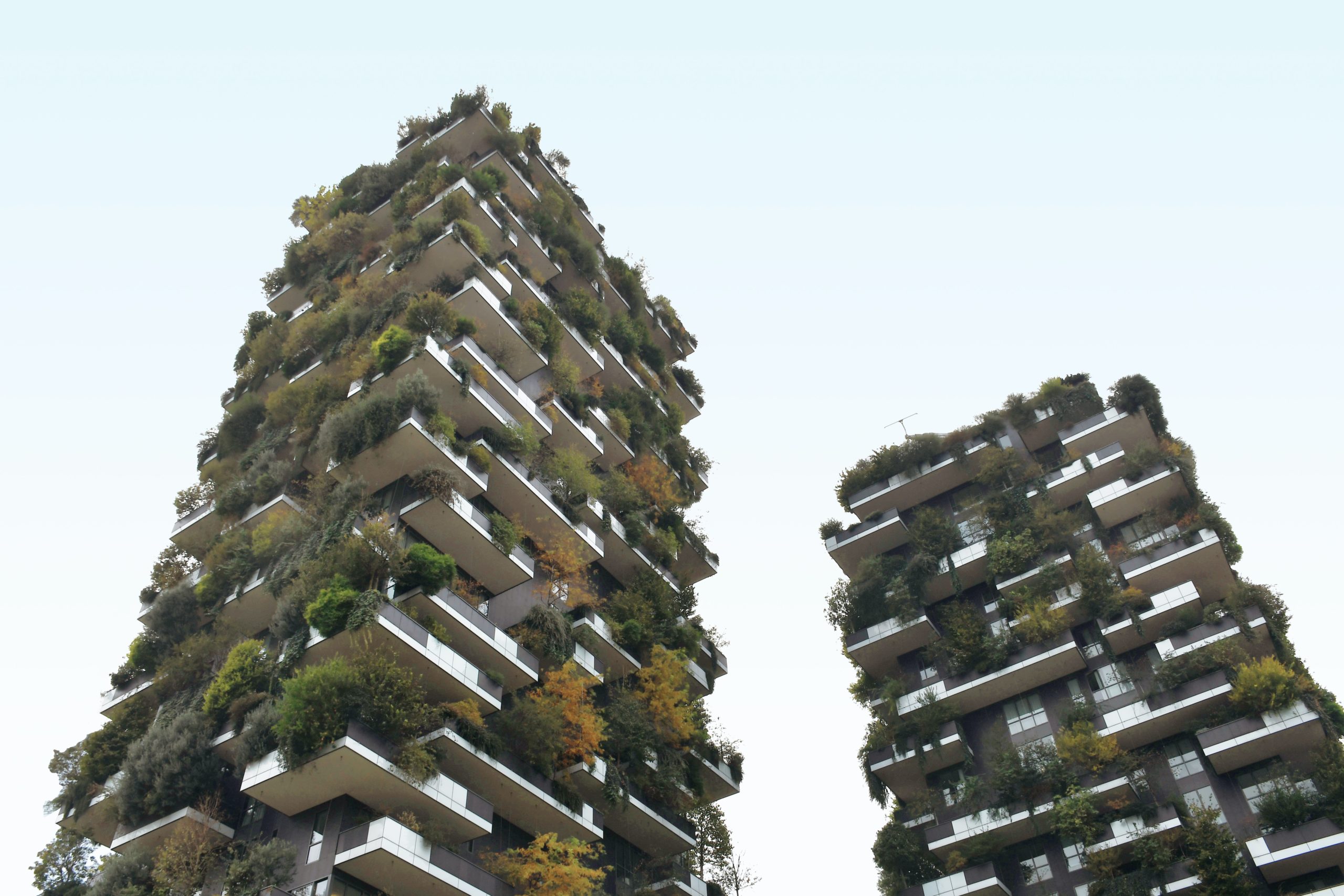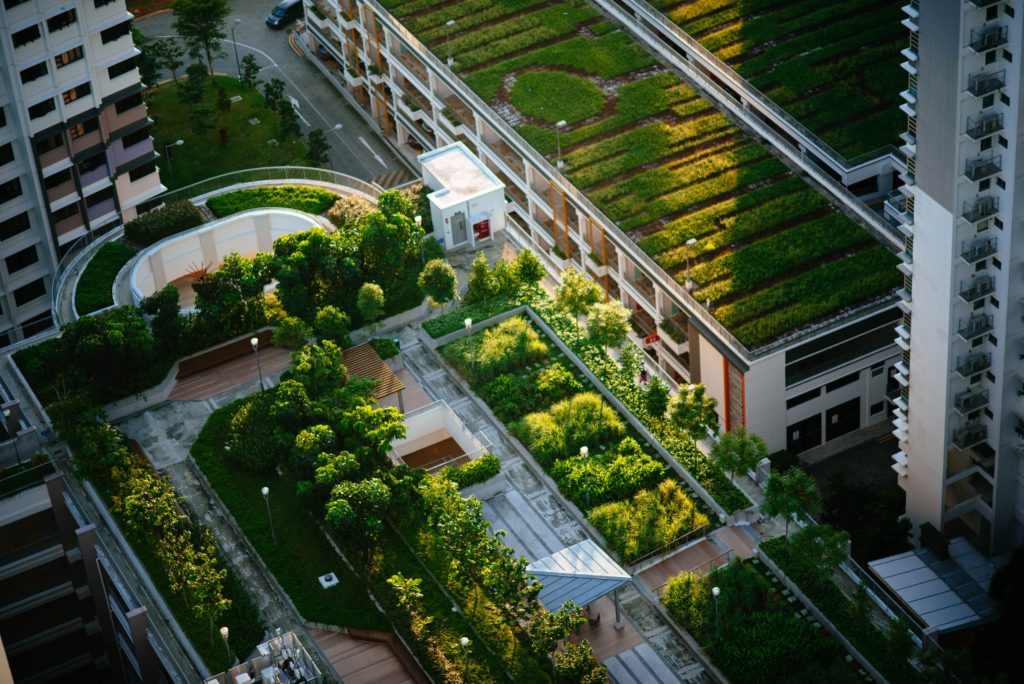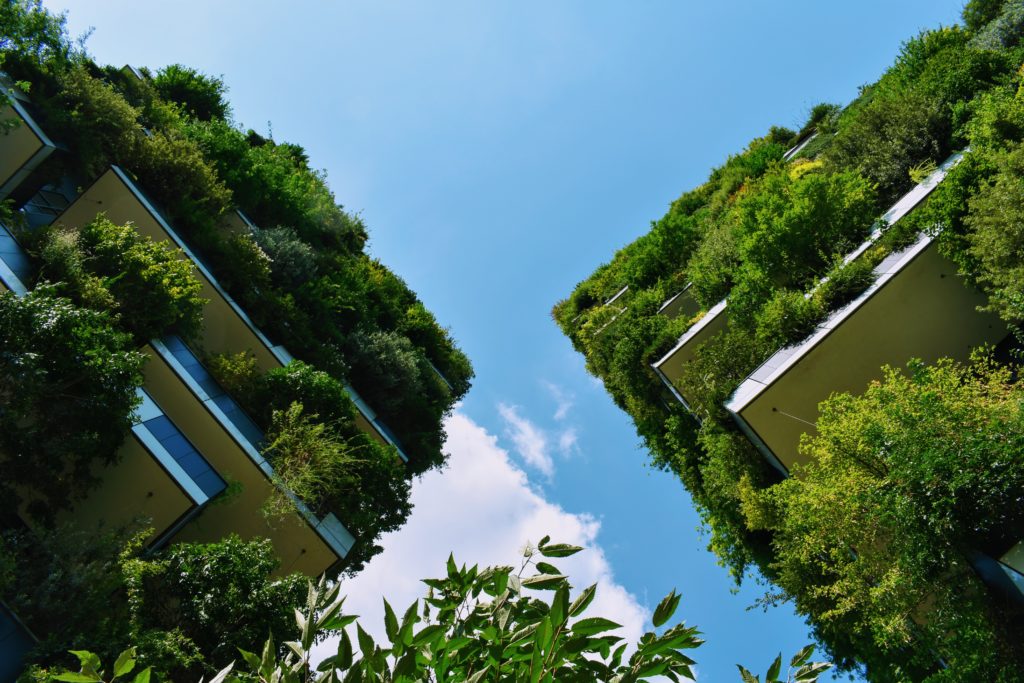Building Sustainable Cities in the New Normal

In a world with an ever-growing population, we are faced with the difficult task of designing cities and forming communities that are resilient, safe, sustainable, and inclusive. Many consider moving away from cities for places with more space. So, we must innovate to make urban areas a more desirable place to live. During these trying times of Covid-19, we can look to the future as an opportunity to redesign the way we live. As we build our “new normal,” we should aim to shape our communities with sustainable and regenerative practices.
Facets of Sustainable and Regenerative Life
There are four qualities that make a sustainable and regenerative city:
1. Livability – This seems to be a quality we would expect out of any city, but it goes way beyond just being a place that can be lived in. It is a city that is designed to meet the needs and wants of its citizens. This would likely improve the happiness and wellness of citizens because the city is designed with them in mind. This is done through upgrading infrastructure, increasing affordability, revitalizing the natural environment, and much more.
2. Ecology and Nutrition – A sustainable and regenerative city is one that celebrates nature, with the natural environment contributing to improved mental health. With the growing demand for cleaner air in living spaces, communities can Incorporated living buildings. These are self-sufficient spaces that connect occupants to light, air, food, nature, and community. In addition, integrating urban farming into the city’s culture can benefit the economy, people’s health and well-being, and be a learning opportunity for its citizens.
3. Waste – A sustainable and regenerative city eliminates waste in all ways that it can, developing what is known as a circular economy. In a zero-waste system, resources are employed in the optimal way, contributing to what makes these cities sustainable. Sustainable cities and communities often go beyond eliminating waste. They and aim to produce more of resources like water and energy than what they use.
4. Resilience – sustainable cities and communities are prepared for the unexpected, from small issues to large natural disasters. Resilient cities and communities have a free flow of information and actively communicate, creating an inclusive and safe atmosphere. In the age of Covid-19, resilience is ever more necessary. Services should be easily accessible in times of crisis and measures should be put in place to adapt to unforeseen scenarios.

Solutionists of Regenerative Design
Sustainable and regenerative cities are not simply twinkles in the eyes of urban designers. In fact, they are a reality that many solutionists are actively working towards.
The International Living Future Institute is one organization employs the principles of regenerative design to improve our way of life. Their goal is to structure cities that work for the population’s benefit. They develop workspaces that promote collaboration, products that are not only sustainable but actually give back to the environment, and implement biolithic design – connecting people to nature within the built environment. The institute challenges the world to create living buildings, communities, and products and measure success based on actual outcomes rather than predictions. They plan to roll out their inaugural Zero Carbon Conference on October 7-8, 2020 with the theme of “Scaling Our Decarbonized Future.” The conference will dig deep into how to create zero-carbon buildings and communities.
Mitchell Joachim, co-founder of another such organization, Terreform ONE, points to the pandemic as the crisis we needed and have been waiting for to “get any kind of change happening.” In this time, everyone is reevaluating their ways of life and many norms are changing. Terreform ONE is a non-profit architecture and urban design research-based consulting group. They aim to illuminate the environmental possibilities related to those sectors. Their projects span from new, innovative green buildings to a completely redesigned Shanghai Waterfront. Simply scroll through their projects page to get a sense of this sustainable world of possibilities.
For an organization specifically focussed on Regenerative Design, look to Regenesis. They have worked on over 200 global projects, including The Willow School, a K-8 school in New Jersey designed around ecological system regeneration and redevelopment of a large part of the Rio Sabinal to address flooding and water-quality issues while simultaneously making it a pedestrian-friendly walking site.

Your Impact
So what can you do to contribute to this sustainable future?
You can try to purchase products from companies that not only work to reduce their carbon footprint but actually try to have a positive social and environmental impact. Also try contacting your energy provider to see whether you can transition to grid alternatives like solar energy to help reduce energy waste. You can compost, carpool or walk or bike, and encourage your neighbors to spend more time in nature. Changing some of your everyday habits to be more planet-friendly can be part of your new normal.
To go further, you can encourage your city and community to work towards building more LEED (Leadership in Energy and Environmental Design) certified green buildings. This will benefit not only the environment and community health, but also the economy. Change can start with just one person, expand through your community, and eventually reach the world.


Leave a Reply